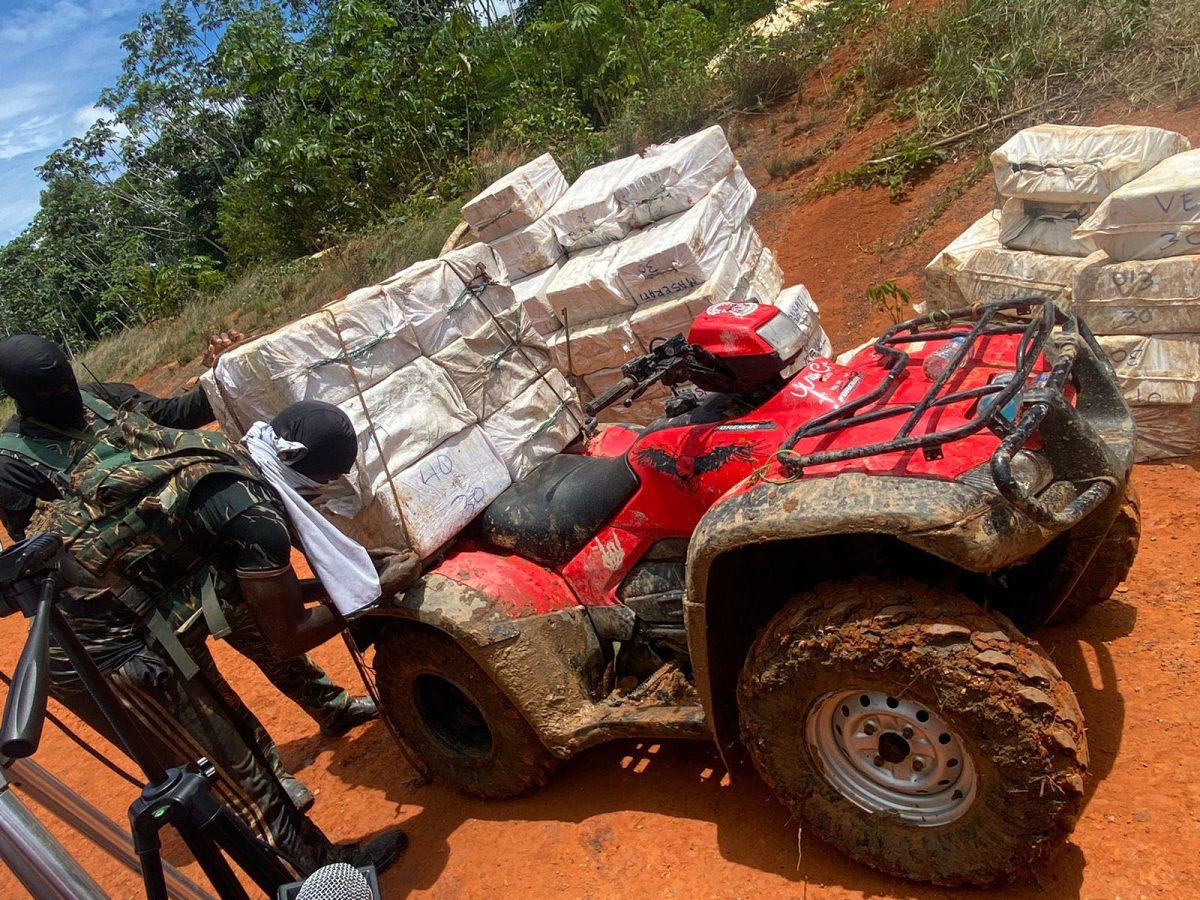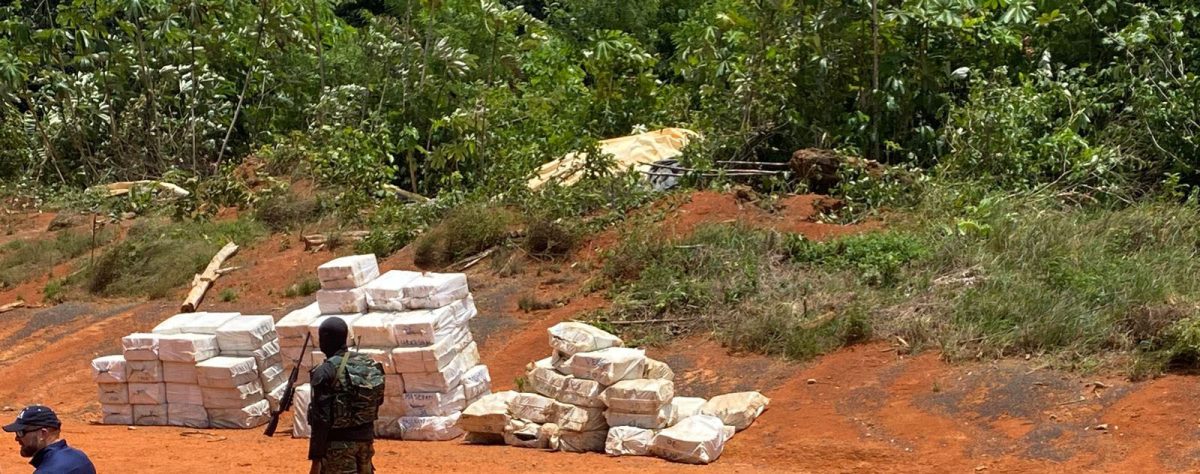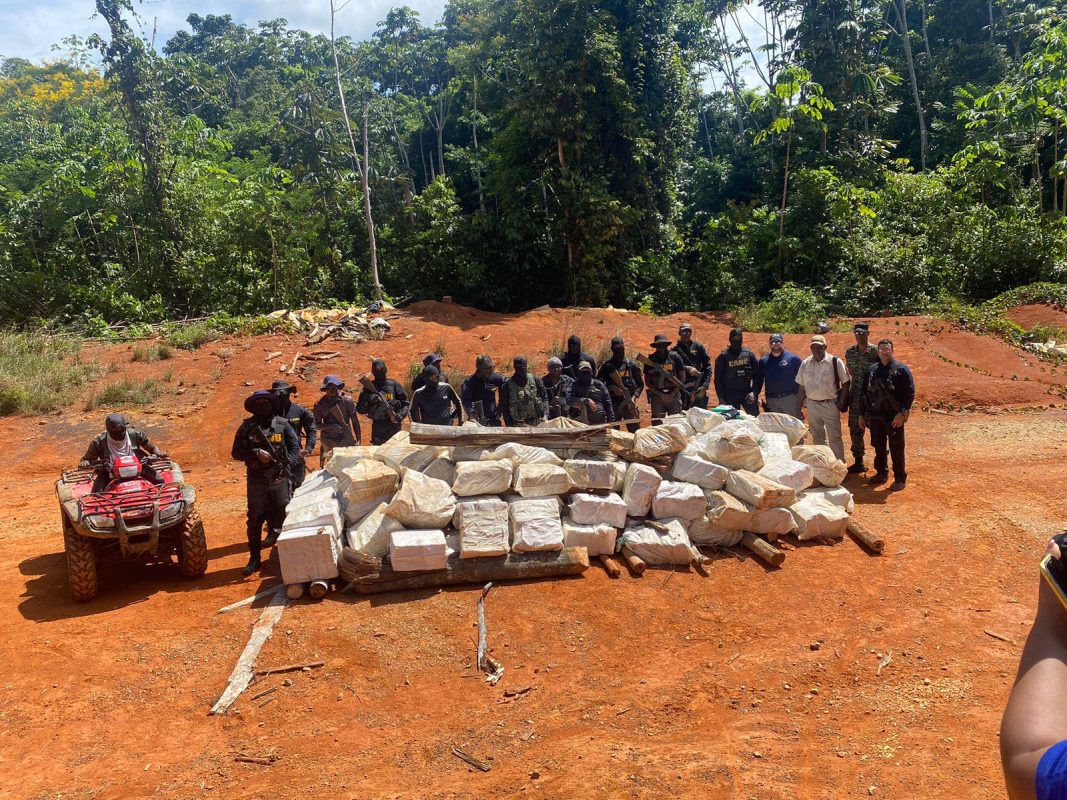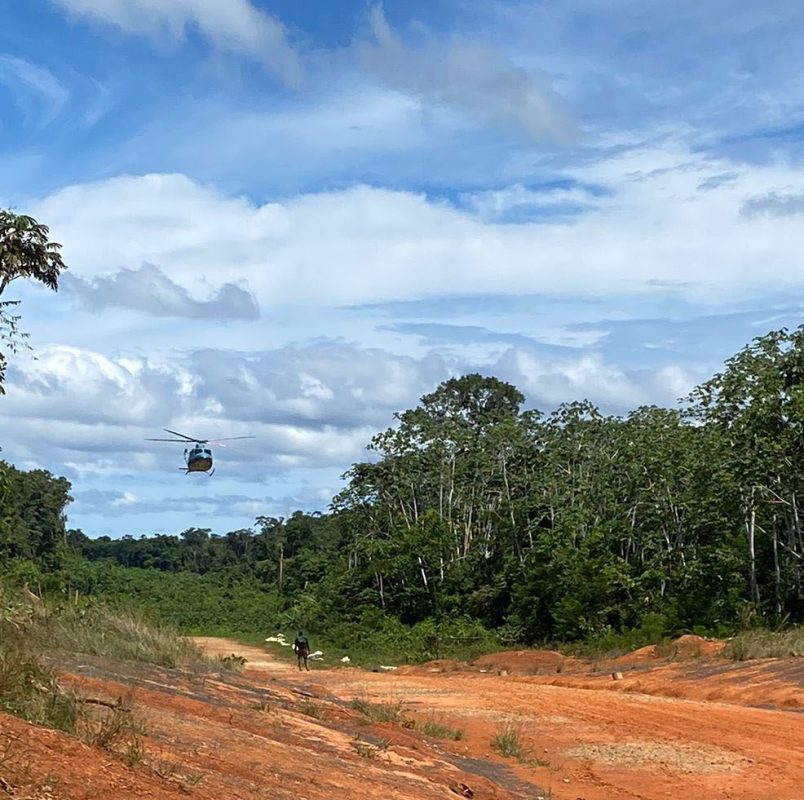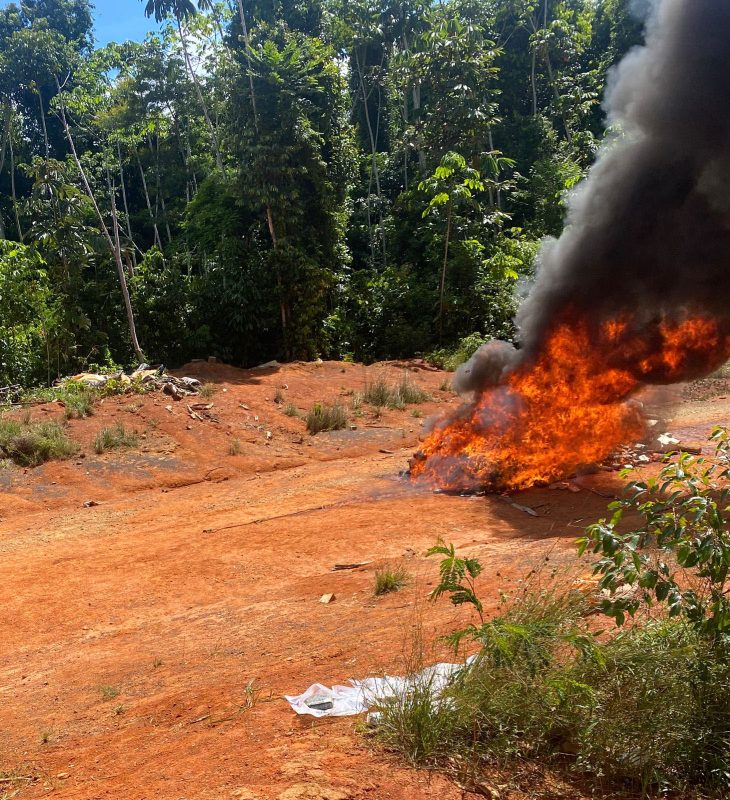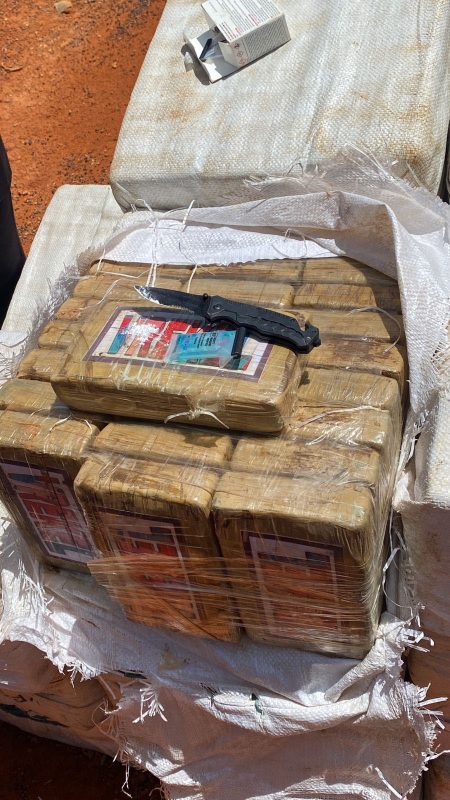A joint operation, assisted by the US Drug Enforcement Administration (DEA), on Saturday resulted in the seizure of 4,400 kilogrammes of cocaine valued at €176 million or more than US$200 million at locations just off of an illegal airstrip at Matthews Ridge in Region One (Barima-Waini) said to be one of largest here.
The drugs were yesterday destroyed on location, but samples were taken as investigations continue.
“The operation was driven by intelligence regarding illegal flights into Guyana and was supported by information shared with the DEA and other international partners,” the Customs Anti-Narcotics Unit (CANU) said in a statement yesterday.
The Ministry of Home Affairs yesterday facilitated transporting reporters to the location from Georgetown, where the drugs were removed from the bunkers they had been hidden in and displayed at the illegal airstrip. There, Minister of Home Affairs Robeson Benn, Head of CANU James Singh, Acting Chief of Defence of the Guyana Defence Force (GDF) Sheldon Howell and a DEA representative briefed the media on the operation so far.
Of note was that the Guyana Police Force was not part of the operation.
“This seizure here behind us is probably one of the biggest in Guyana. As you can see, the way it is packaged… Most of these drugs go to Europe aboard vessels and that is why they are packaged the way they are. It tells you whose drugs and the amount by the way it is packaged,” the DEA official said pointing to the packages which were labelled.
He praised the collaborative effort between his agency and the GDF and CANU saying, “These people here made that happen”.
Benn said that locals had to have helped facilitate the large-scale operation and urged residents to be more cooperative with law enforcement, as “if we get more cooperation in this fight I think we will get more results.”
In the hinterland, where there is a dearth of oversight resources to actively guard this country’s porous borders and man the jungles, he said, people “who live in the interior know the forest more” and as such can help in relating what was happening there.
Benn contended that “an operation of this kind couldn’t be done without some local help” but law enforcement believed it was “a major operation done by persons overseas, in neighbouring countries.”
As investigations are still ongoing, he said, a lot of information could not be shared but that as they progressed more answers would be forthcoming.
Stabroek News understands that GDF personnel played an integral role in the operation as it was they who combed the area, on notification that there were drugs stashed nearby. The DEA pressed that they should check for bunkers and other holes and that was done. When the discoveries were made, GDF ranks stood guard at the locations overnight.
Howell, who is acting for Chief of Defence Omar Khan currently on work duty overseas, expressed that “this seizure is indicative of months and years of intelligence sharing of all the agencies.”
Stating that the “DEA is one of our biggest partners”, he said the army was proud to support special operations and provide logistical and other support. He also praised his ranks and added that the GDF will continue working and investing to actively protect the nation.
Meanwhile, Singh said that the operation was one of many CANU had conducted over the past five months with the GDF to identify and monitor illegal airstrips. “In this case we were lucky as we were able to seize the drugs before they were transshipped to another location,” he said.
The airstrip he said was not gazetted by the government and as thus was illegally built to accommodate small aircraft. The large amount of drugs, he posited, was not for the local market as the packaging was indicative that it was to be moved on
Singh said that the cocaine was sectionalized in four bunkers. There were also several camps nearby and law enforcement surmised that there might have been, possibly 10 to 12 people watching the shipment and “waiting for the opportune moment” for it to be moved.
The GDF ranks also discovered some fuel along with the drugs and that was seized by the GDF Special Forces and other law enforcement.
While he stated that they wanted “to make sure you [reporters] were here to see the narcotics coming out,” Singh added that for security purposes, the media could not go to the locations of the bunkers. He said that when the law enforcement team and army went into the area, “they noticed some persons retreating into the jungle, so we have to treat it as if they are out there.”
Singh said that the bunkers were “basically pits and covered with wood and tarp and bush” so that someone passing by would not be able to determine that drugs were stashed there.
“The officers came in and spent days combing the area. They knew, as they shared information with our colleagues from the DEA, if it was not above ground then it was hidden somewhere underground,” he said. They probed further and found the pits, he added.
Meanwhile, CANU said in its statement that the bust highlights the agency and the government’s “unwavering commitment to combatting the narcotics trade in Guyana and collaborating with international partners.
“The Government of Guyana is making significant strides to equip the Joint Services with the necessary tools to combat drug trafficking and other illicit activities within the country. Recent investments in the GDF Coast Guard, Air Corps, and the Guyana Police to enhance monitoring of border regions underscore this dedication.”
CANU said that the seizure also demonstrated the confidence the government, international agencies and the Joint Services have in its ability to fulfil its mandate.
“CANU has been leading Guyana’s anti-narcotics efforts, resulting in previous seizures of aircraft, and semi-submersibles, and the arrests of high-profile drug traffickers,” the statement said.
